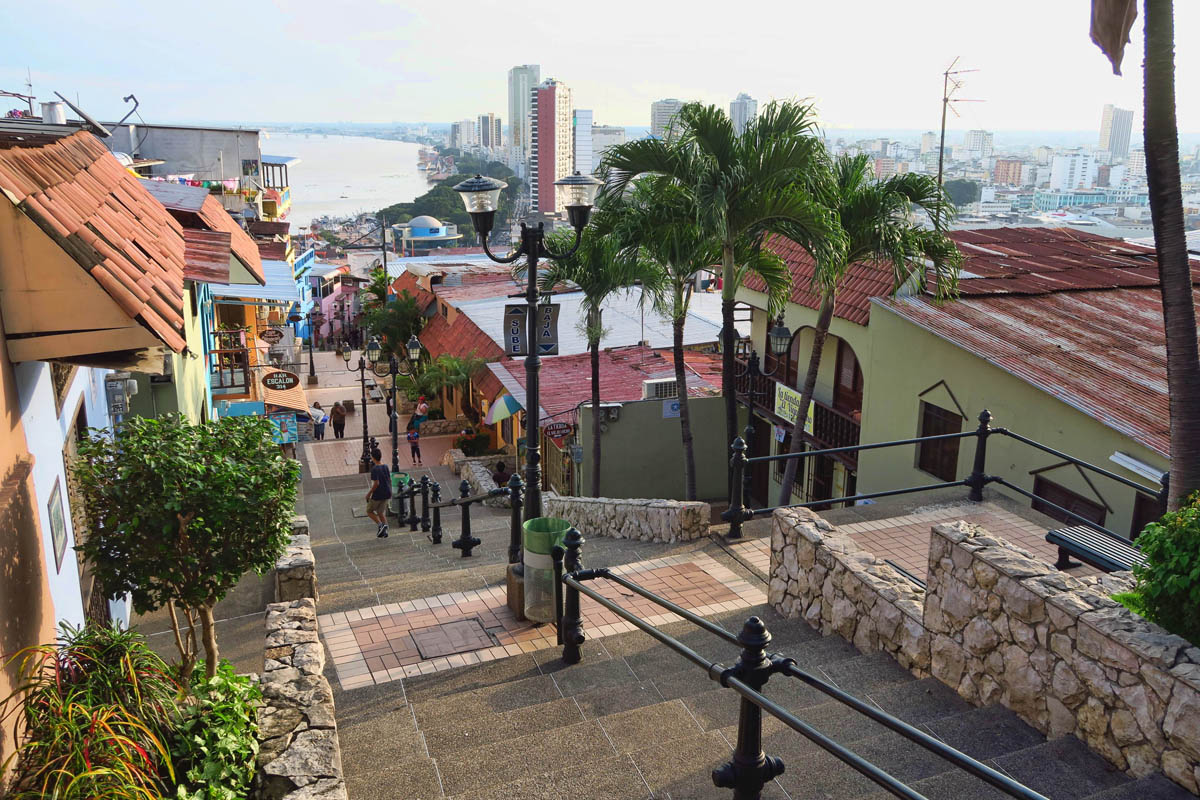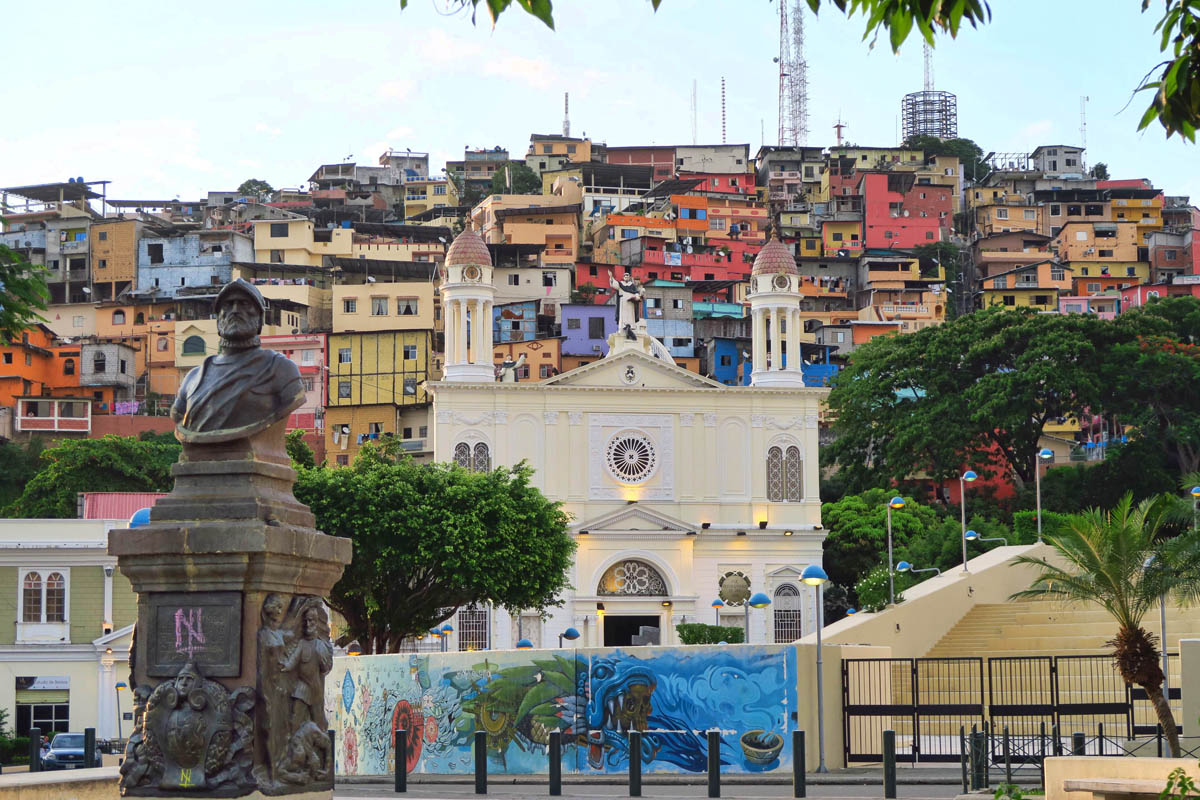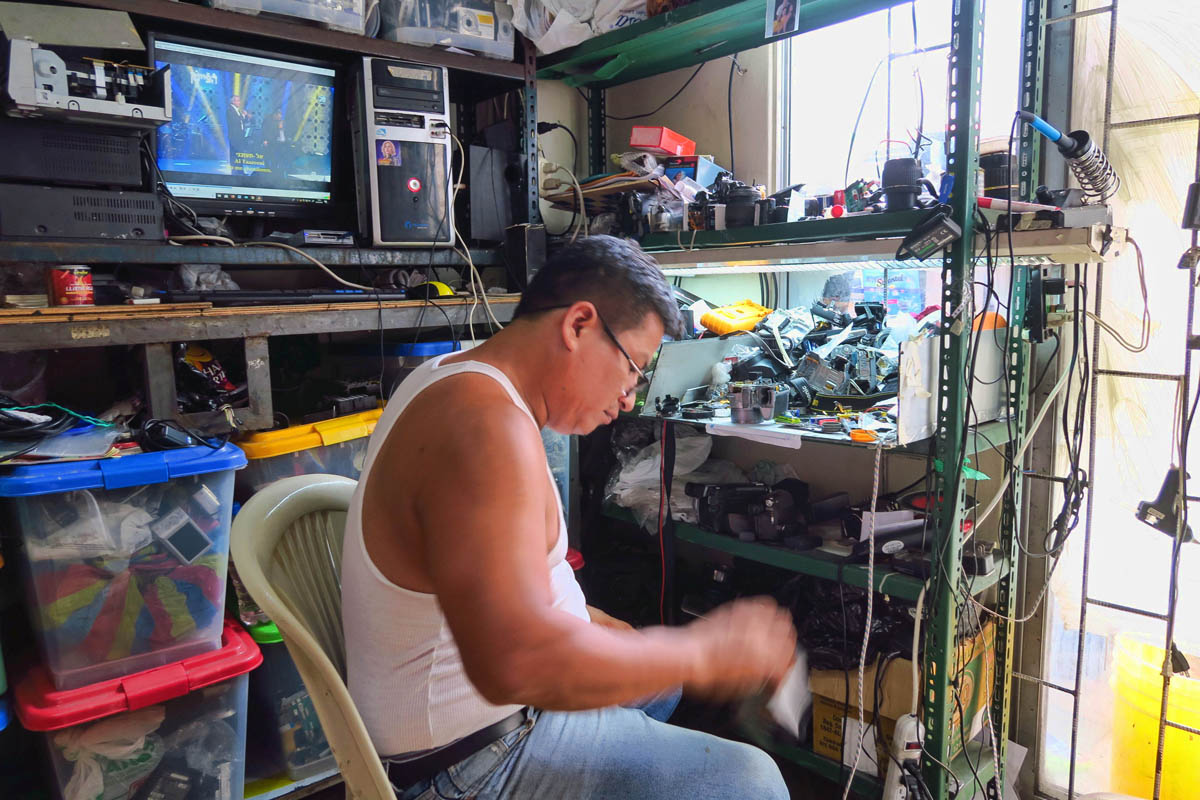When back in Quito trying to secure my last minute Galapagos cruise, I was under a lot of pressure to make my decisions quickly. It felt like a high stakes game, committing to the cost of the cruise without airfare, then trying to nab seats before the airfare went up or sold out. I had only a few minutes to decide what my return destination would be, and when. I opted to stay in the Galapagos five extra days, thinking the cruise would only leave me wanting more.
That might have been true had I reversed the order and done the land portion first, followed by the cruise. But on the heels of the heavenly cruise, Puerto Ayora felt like hell, or at least as hot. Without the benefit of the sea breeze, even my eyelids were sweating. Food was terribly expensive, like $4.50 for a limeade. And not one restaurant or internet cafe had so much as a ceiling fan, let alone air conditioning. Tours were all to the same locations we had just come from, and at a cost on average of $100 per person. Stories of crowded ferries in between islands, limited and expensive accommodations, and a forecast full of afternoon thunderstorms caused me to lose my appetite, literally and figuratively.
I decided to cut my losses and change my airline ticket. Not being particularly keen to return to Quito, I had chosen Guayaquil as my return destination five days from now. I marched into the airline office in Puerto Ayora braced to bite the bullet, only to be assessed a change fee of a mere $28. And with that, my Galapagos adventure was behind me.

There are 444 winding steps up through the Las Peñas neighborhood to reach El Faro, the lighthouse. Steps are numbered in lower right corner all the way to the top, so one can measure their progress.

While the lighthouse appears quite tall from down below, it is really pretty short once you reach the top of the 444 steps up the hill. It was constructed in 2001, so relatively new.

It’s a spectacular view from the top of the hill. Here you can see the malecon which stretches along the Guayas River. It is lined with shops, restaurants, and amusement parks (note Ferris wheel on the left.)

While a bit touristy, it’s a lively neighborhood with restaurants and bars along the stairs to the top.
Guayaquil is Ecuador’s second largest city, and the nation’s main port. The oppressive humidity of the city gives the impression of being a coastal town, but in fact, the waters edge is actually the Guayas River, 40 miles north of the Gulf.
First order of business after landing in Guayaquil and finding a hotel was to find a location for my second camera repair of the trip, which would dictate whether I would continue on, or return to the US. Eighty bucks to extract a grain of sand from the lens shield (camera had to be disassembled for the second time in a month,) and I was back in business once again.
But the horrid heat and humidity was wearing me down, contributing to a bad case of Traveler Burnout. I recognized the symptoms. The overcoming urge to stay holed up in the hotel room, lying in direct path of the AC, while binge watching the CNN daily line-up. It was just too hot to be out mid-day, so I was forced to restrict my sightseeing to early mornings and late evenings. I strolled along the riverside malecon at a slow slog to avoid excreting more water through my pores than I could ingest. It was time to get back to higher elevation.
On my last night in Guayaquil, I was sleeping soundly, until 5:15am when my bed began to shake. The four legs of the bed commenced clattering, each to its own beat. I’d been through this once before in Costa Rica, so I knew the feeling. Earthquake! But in Costa Rica, I was on the ground floor, not a third floor hotel room with brick interior walls.
Ecuador is located along the “Ring of Fire,” an area prone to earthquakes. The Guayas province, Ecuador’s most populous region is particularly at risk because of its location near the Gulf of Guayaquil south of the North-Andean subduction zone. The brackish water where the river meets the gulf makes for weak and compressible soil sediments over hard rocks, resulting in heightened susceptibility to earthquake damage.
I jumped out of bed and flew out the door, down two flights of stairs, leaving behind even my eye glasses. Standing in the hotel lobby wearing only my PJs, the best I could understand from the Spanish-speaking hotel manager was “No problema, it happens all the time.“ So back to bed I went.
But 15 minutes later it happened again, this time stronger and longer, sounding like giant box of bricks rattling. Back down the stairs I flew again, only this time it was different. The man behind the desk seemed concerned as he was rattling away on his cell phone. There was another French-speaking tourist in the lobby wearing only his pants, his belt still unbuckled. And this time, I could see through the window, people had begun to congregate in the streets. This time, I had taken my cell phone along, and was able to google the news to learn it was a 7.5 quake in Cuenca, about 200 miles away. After that, I went back to bed fully dressed, with a “bail out bag” stashed near my third floor door.
Time to get out of Guayaquil….









Oh Jeeze!! A perfect storm!
Good grief! What an end to such a magical cruise. It’s good not to sleep naked!
Fun! Glad you weren’t any closer to the epicenter 🙂 Hey, what’s the “twisty” tall building in your 5th photo? Hotel?
Thanks for the question, Cuz. You got my curiosity up, so I did some research. It is an office building completed in 2014 called “The Pointe,” the tallest building in the country with 36 floors, 419 offices, 8 shops. I believe the Wyndham Hotel is adjacent.
Time to get out of Guayaquil, indeed! My only experience of being in the midst of an earthquake was in Vicenza, Italy in May 1976. The epicenter was in the Friuli region in northeast Italy (near Udine). Up to 978 people were killed, 2,400 were injured and 157,000 were left homeless. We felt the aftershocks for weeks afterward. Had I been you in that hotel room in Guayaquil, I’d have bugged out the *first* shakedown go ’round! 🙂
YIKES! That’s quite a quake! Fortunately, this one was nothing in comparison. Bugging out does beg the question though of “What is ‘safe?” Was it better to stay there in hopes the news was correct, that the epicenter was 200 miles away? Or to evacuate and risk encountering an unlawful city taxi driver at 5:00am? It’s always a conundrum…
An earthquake! How cool is that! We had a baby one here a few years ago and the sound was intense. Glad you are safe and had the experience.
Holy moly! I was in CDMX om 1985. I was on the eighth floor getting my things together to go down and get in the car with a driver that was waiting for me.
Honey, I got down 8 flights of stairs lickety split with my purse and passport. I just
left everything and told the driver to get me to the airport. The drive was shocking and horrifying. I got on the last plane out that day………..didn’t return for several years.
Something I never want to experience ever again. I’m SO SO glad you are and were safe.
There was never an official headcount but around 10,000 was the death toll.
Barb and I have a saying “First comes hot then comes cranky”. We cannot stand the heat and humidity which is why we stick to the northern states and Canada during the summer. Once the temps get into the 70’s we are hot!
Having never experienced and earthquake I don’t know how I would react but I am guessing it would be a lot like you!
So happy you were safe and able to easily (and cheaply!) change your flight. I hate humidity !
So happy that you are safe, I have only experienced a 4 earthquake 50 miles away, but Deede was a high school junior during the 64 quake in Alaska, she doesn’t feel the need to experience another one. Guayaquil looks as an interesting city worthy of a visit in the non-muggy season. Ecuador has always interested me. Thanks, humidity is the worst. So glad you were able to find a competent camera repair tech.
That was quite the wake up call! Definitely time to listen to your body and get the heck out of there! Traveler’s burnout indeed. I didn’t know that ever happened to you. I just can’t imagine. So grateful that you write about these adventures, because even though 73 isn’t as old as a lot of seasoned travelers, I find myself needing it less and less. So I travel vicariously, enjoy it thoroughly, and return to the home things that I love here in Oregon. Short travels, beach, mountains, camping trips here and there, winery visits and wood fired pizza. Sad to say, you make me recognize my age, Suzanne.
Hi, where did you get your camera fixed? Currently looking for a place to fix a water damaged Nikon D500 to no avail. Share me your secrets!
Alex, are you in Guayaquil? If so, I will type out directions on how to find the guy.